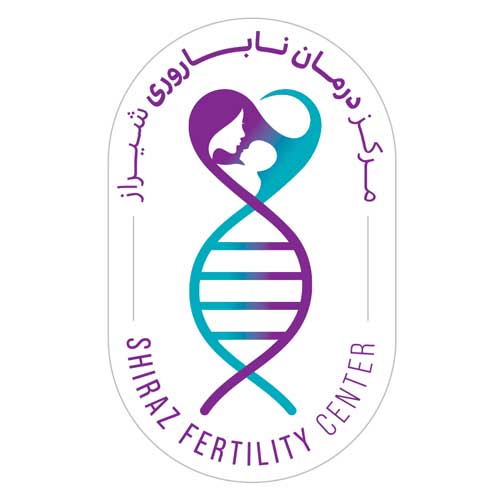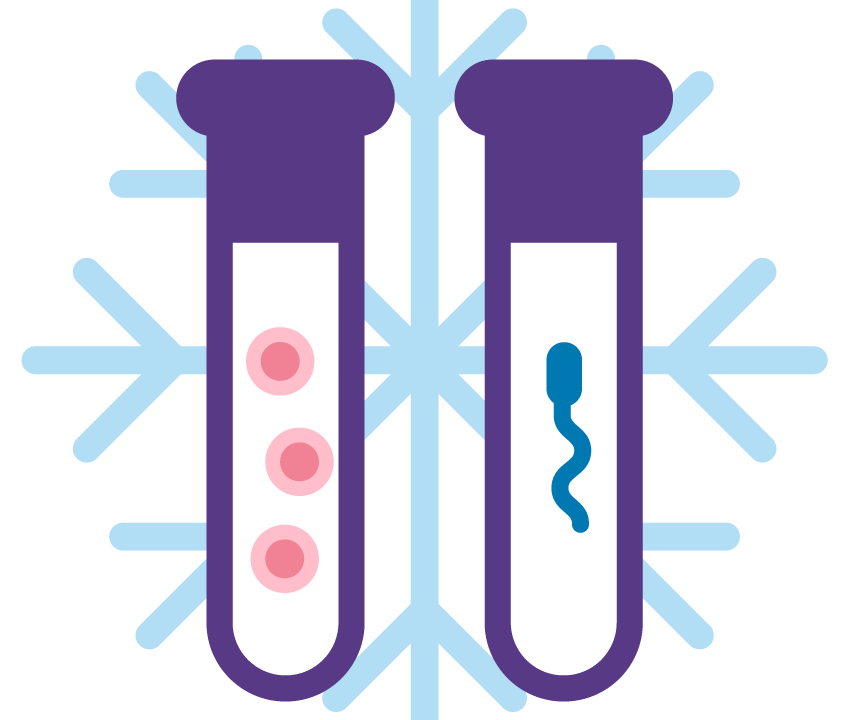
Embryo transfer

Egg donation
Cryoprese rvation
Embryo Cryopreservation
The first pregnancy resulting from the transfer of an embryo preserved by freezing was reported in 1983. In subsequent years, with advancements in cryobiology, the preservation of embryos in a frozen state has become a fundamental component of modern assisted reproductive technology (ART). Embryos can be frozen at any stage, from the zygote to the blastocyst, and these products can retain their viability for at least several years and possibly indefinitely. The cryopreservation process consists of two distinct phases: freezing and thawing. The goal of freezing is to prevent the intracellular water from crystallizing into ice, which would cause cellular damage. The freezing methods vary based on the developmental stage of the embryo, which affects cellular permeability.

There are two primary methods for cryopreserving embryos:
Slow freezing and Vitrification method.
In both methods, cellular water is gradually replaced by cryoprotectants (such as dimethyl sulfoxide and propanediol glycerol) through an osmotic process, with a progressively increasing concentration of the cryoprotectant. In slow freezing, embryos are placed in freezing medium at room temperature and then transferred to a freezing straw. They are then cooled at a controlled rate of 2 degrees Celsius per minute to -7 degrees Celsius. Following seeding, the samples are cooled at a slower rate of 0.3 degrees Celsius per minute to -30 degrees Celsius, and finally stored in liquid nitrogen (-196 degrees Celsius).
In the vitrification method, embryos are rapidly frozen by immersion in liquid nitrogen, resulting in a solid, glass-like state. This process is reversed during thawing. The embryo is gradually passed through decreasing concentrations of cryoprotectant and then incubated in a culture medium before transfer. The primary goal of vitrification is to completely eliminate the formation of ice crystals in all solutions containing embryos or oocytes. Most successful vitrification methods rely on the use of very small volumes of sample solutions and direct contact between the embryo or oocyte and liquid nitrogen.
In the vitrification method, a significant concern is the toxic effect of high concentrations of cryoprotectant and the potential risk of cross-contamination through direct contact with liquid nitrogen. Results from studies show that post-thaw survival rates following slow freezing vary between 50 and 90%, with higher rates observed at the zygote stage compared to the cleavage and blastocyst stages. Implantation rates and pregnancy rates after transfer of slow-frozen zygotes, cleavage-stage embryos, and blastocysts have varied across different studies, but these differences have not been significant.
Initial experiences with the vitrification method indicate that survival rates are consistently high, and there may be higher rates of implantation and pregnancy. In general, in most centers, the success rate of frozen embryo transfer cycles has been about half to two-thirds of that observed in fresh embryo transfer cycles; one reason suggested is that embryos with the best quality are usually selected for fresh embryo transfer. One of the advantages of blastocyst freezing over cleavage-stage embryos is the better selection of embryos during the culture process, leading to the development of higher quality embryos compared to frozen cleavage-stage embryos.
One reason for higher pregnancy rates with day 5-6 blastocysts is better synchronization between the endometrial lining of the uterus and the blastocyst. In women with normal ovulatory function, frozen-thawed embryos can be transferred in their natural cycle. Alternatively, embryo transfer can be performed in a stimulated cycle where endometrial development is carefully controlled through the sequential administration of exogenous estrogen and progesterone. Initial down-regulation with GnRH agonists can also be used (as is typically done in oocyte donation recipients). There is no evidence to suggest that one endometrial preparation method is superior to others. In both natural cycles (days after ovulation) and stimulated cycles (days of progesterone treatment), the timing of transfer is coordinated with the developmental stage of the embryo. The advantages of embryo freezing include a reduced risk of multiple pregnancies and reduced frequency of ovarian stimulation.
Oocyte Cryopreservation
Egg freezing is indicated for women at risk of losing their fertility due to the following reasons:
Cancer treatment: Women undergoing pelvic radiotherapy or surgery for cancer.
Ovarian dysfunction: Premature ovarian failure, ovarian hyperstimulation syndrome, or poor response to ovarian stimulation.
Social or career reasons: Women who wish to delay childbearing.
Egg donation: For women donating their eggs.
Ethical or legal concerns: In cases where embryo freezing is not an option due to ethical or legal reasons and the male partner’s sperm is not available after successful egg retrieval.
Reasons for reduced success rates in IVF following thawing of frozen eggs: The reduced success rates of IVF following the thawing of frozen eggs can be attributed to the premature release of cortical granules and hardening of the zona pellucida.
The unique nature of the egg (its large size, spherical shape, singularity, and fragility) is responsible for its low survival rate after thawing.
A cell with an irregular shape (like a fibroblast or lymphocyte) has a larger surface-to-volume ratio and can reach osmotic equilibrium more quickly than an egg. Conversely, a large spherical object (like an egg) has the smallest surface-to-volume ratio of any geometric shape. This smaller surface-to-volume ratio means it takes longer to reach osmotic equilibrium.
Other complications of freezing include damage to lipid droplets, lipid-rich membranes, and cellular microtubules. Lipid damage is irreversible and leads to the death of the egg. Compared to other species, although the lipid content of human eggs is relatively lower, damage to the membrane, depolymerization of microtubules, and abnormal chromosome arrangement and aneuploidy may occur following egg freezing in humans. During the thawing process and the removal of the cryoprotectant, the spherical shape of the egg may only allow for limited expansion, and as a result of water influx into the cell, the cell membrane may rupture.
It is best to freeze eggs between 16 hours after retrieval and immediately after removing the cumulus cells. ICSI should be performed approximately 2-4 hours after thawing the eggs. Maintaining this short culture time is essential to improve the flexibility of the egg membrane during the ICSI procedure. The success of egg freezing depends on various factors, including the patient’s age, ovarian stimulation regimen, quality of the resulting embryo, timing of embryo transfer, and endometrial preparation. While the ovarian stimulation protocol doesn’t seem to significantly impact the clinical outcomes of frozen eggs, the main challenge in egg freezing success lies in the poor survival rate of frozen-thawed eggs due to their size, high water content, and fragile chromosomal arrangement.
During the freezing or thawing process, the formation of intracellular ice damages the meiotic spindle. Another barrier is the hardening of the zona pellucida layer, which hinders natural fertilization. Clinical trial results have shown that oocyte survival after vitrification and warming is 97-90%, fertilization rate is 79-71%, implantation rate is 41-17%, and overall clinical pregnancy rate is 36-61%, with a clinical pregnancy rate per oocyte warmed of 12-4.5%. The survival, fertilization, and pregnancy rates from frozen oocytes are increasing. Although the number of pregnancies and births from frozen oocytes is still low, this number is increasing rapidly. The incidence of chromosomal abnormalities in human embryos derived from frozen oocytes does not differ from those derived from fresh oocytes.
Ovarian Cryopreservation
Recent advancements in cryobiology have brought hope with the storage and freezing of eggs and ovarian tissue as methods for preserving fertility. Ovarian tissue freezing, at least theoretically, provides a tool for freezing primordial follicles, which can later be subjected to in vitro maturation. Chemotherapy and radiotherapy in women with cancer jeopardize fertility. In some cases, the ovaries can be moved out of the radiation field. As a method to protect the gonads from the adverse effects of chemotherapy, treatment with GnRH agonists has been suggested, but there is no convincing evidence regarding the efficacy of this treatment.
Currently, autologous ovarian tissue transplantation after freezing seems to be the most practical and effective approach and successfully preserves fertility in women with chemotherapy-induced ovarian failure. In this method, ovarian tissue is surgically removed via laparoscopy or laparotomy and frozen using slow freezing or vitrification techniques. In the future, the ovarian tissue is thawed and reimplanted into the patient in its original location (orthotopic transplantation) or in another location such as the forearm or abdominal wall (heterotopic transplantation).
“In orthotopic transplantation, pregnancy may occur spontaneously without the need for assisted reproductive technology, whereas in heterotopic transplantation, in vitro fertilization (IVF) is necessary. Oocytes retrieved from heterotopic grafts in humans have been fertilized in vitro and biochemical pregnancies have been established following embryo transfer. A number of live births have been reported after orthotopic autologous transplantation of frozen ovarian tissue. One of the potential risks of ovarian tissue cryopreservation and autologous transplantation is the reimplantation of tumor cells in women with malignancies. Further research is needed to determine patient selection criteria, tissue collection methods, and cryopreservation techniques.”
Source: Clinical Approaches to Infertility in Reproductive Biology
Also read:




